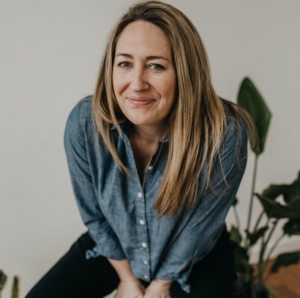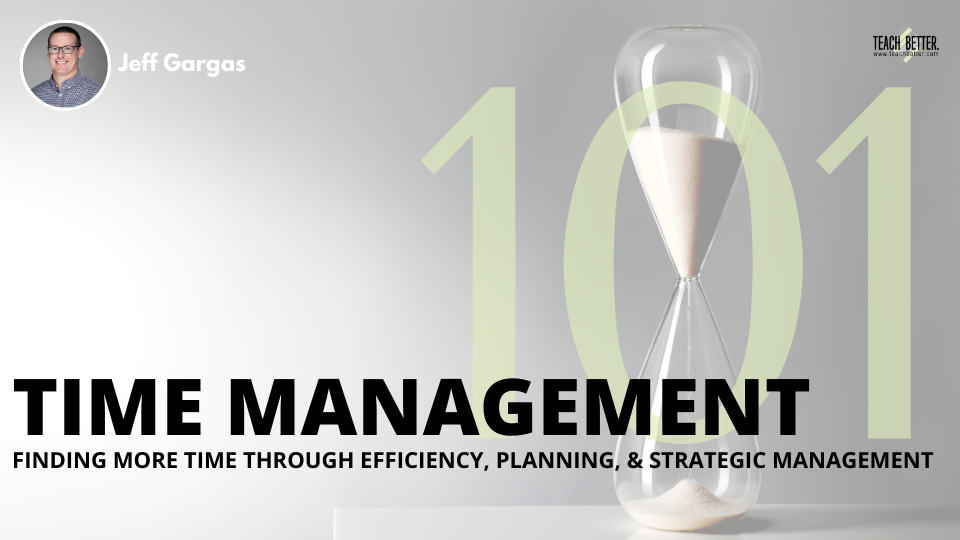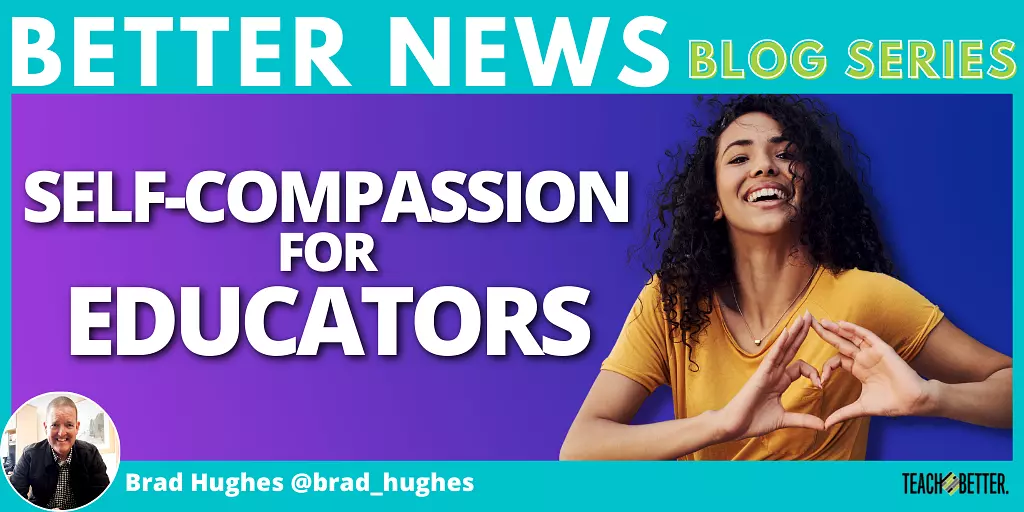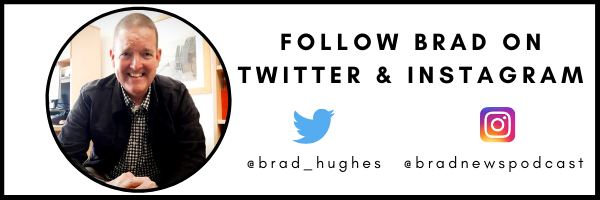TL;DR:
- Brad Hughes interviewed Lisa Baylis, the author of the book Self-Compassion for Educators.
- Compassion is when we see suffering, stress, and struggle, and we have a desire to alleviate it. You are someone who is important to take care of.
- The first component of self-compassion is mindfulness—being aware of our thoughts and feelings.
- The second component is loving-kindness—attending to our stresses and strong feelings patiently and lovingly.
- The third is common humanity—that suffering is an experience of being human, and that we are not alone in our struggles.
- Burnout could happen when we’re constantly having to show up, but we’re not actually attending to what’s really going on for ourselves.
- Self-care has both a tender side—think massages and coffee dates—as well as a fierce side which involves things like setting boundaries.
Hello, reader! Welcome back to the Better News blog series!
This is Brad Hughes, elementary principal and Chief Encouragement Officer from Ontario, Canada.
So glad you’re here to preview Episode 31 of The Good News, Brad News Podcast featuring educator, facilitator, and self-compassion champion Lisa Baylis, from Victoria, British Columbia, Canada. Lisa is the author of the book Self-Compassion for Educators, and the creator of the AWE Method–Awaken Well-being for Educators.
Lisa has been sharing well-being strategies for over 20 years. She studied under mindful self-compassion (MSC) pioneers Dr, Chris Germer and Dr. Kristin Neff. Over the last few years, Lisa has deepened her practice and determination to teach MSC to educators specifically, planting the seeds of self-compassion to grow and maintain their capacity to serve.
At a time where educators are frequently reminded to look after themselves, I talked with Lisa about shifting the conversation from self-care to community care—and to conditions where it’s permitted and possible for educators to look after each other.
Compassion is when we see suffering, stress, and struggle, and we have a desire to alleviate it. Self-compassion recognizes that you, too, are someone to take care of. - @Lisa_Baylis Click To TweetWhat are the components and benefits of self-compassion?
Compassion is when we see suffering, stress, and struggle, and we have a desire to alleviate it. Self-compassion recognizes that you, too, are someone to take care of. It’s the practice of saying. “I care enough about myself to care for myself.”
We are great at providing compassion for our students and for our colleagues. We see their stress and their struggles and we want to jump in and support them. Self-compassion is turning that support towards ourselves, saying, “I notice that I’m the one that’s struggling. I’m having a hard time, or suffering in some way, and I also want to help.”
The first component of self-compassion is mindfulness—being aware of our thoughts and feelings, and what’s going on around us, without getting caught up in judgments and criticisms about our thinking and feeling patterns.
The second is loving-kindness—attending to our stresses and strong feelings patiently and lovingly, with the same caring words we would offer to our dearest friends, students, or colleagues.
The third is common humanity—that suffering is an experience of being human, and that we are not alone in our struggles. We don’t need to negate our strong feelings; we’re entitled to feel them.
When you bring all of them together, you become aware that when you are hurting, you are not alone, and that other people feel just like you.
Many educators are caregivers, yet rarely include themselves in the compassion and kindness they deserve and need. Why might that be?
When we have this natural tendency to care, we are really great at outwardly showing it. But many of us haven’t been taught to also include ourselves in that circle of compassion. We don’t recognize that our own personal practice of caring for ourselves is part of caring for others.
That personal awareness takes energy and is hard. Many of us just don’t attend to it, and yet it can be probably one of the most beneficial ways to sustain our well-being.
Talk with me about emotional labor, and its relation to fatigue and burnout.
Emotional labor is like the face you put on in the morning when you know you’ve got to get up and go face the day. I actually think I saw a meme once and it was, you know, a teacher getting up in the morning and looking at a mirror of all the different feelings and faces. And it’s like, “Which one am I going to put on to be able to face this day?”
So much of what we carry and what’s going on in the world is heavy, and yet many of us know that it’s not safe to bring that heaviness to our kids. It takes energy to put on that face, to be something for somebody else when we’re not really feeling that way. And that’s really exhausting.
That can be the beginning of a path to burnout–constantly having to show up, but not actually attending to our own feelings and what’s really going on for ourselves.
Educators are often reminded to look after themselves. Could we shift the emphasis from self-care to community care, and give educators permission and space to look after each another?
Invitations to practice care in your own space are really important and an emphasis around that is fine. The timing of messages around self-care is sometimes the problem. It’s hard to find the time and determination to make self-care part of your life. For anyone struggling through challenging working conditions, making time for self-care can just feel like ‘one more thing’.
I often think about the quintessential self-compassion question: “What do I need right now?” Is that a question that can be asked in my community?
Maybe we can create communities of support, where we can slow everything down, recognize and respond to suffering, and make time and space for compassionate conversations. Shifting systems from always being reactive, to being more predictive and responsive to what everyone needs, is probably one of the most important things we can do right now.
Does boundary-setting fit with your vision for self-compassion?
Absolutely. Kristin Neff talks about the yin and yang of compassion—the tender and the fierce side.
When we talk about self-compassion, we most often think of the tender side—coming back home to ourselves, being gentle with ourselves. But sometimes there’s a bit more of a fierce side, a protective side, a boundary-setting side that says, “This is all I can take right now.” It’s recognizing that actually doing more than we have the capacity for is not being self-compassionate.
I think in education there’s a push that educators can be all things and do all things. But while we can do many things well, we can’t do everything at the same time. Setting boundaries is one of the most important fierce practices that we can do for ourselves.
And we can do that without being harsh or critical. It can be such a beautiful practice to define what’s truly important to us, and then to conclude we can’t take one more thing on.
[scroll down to keep reading]
What would you suggest to someone that wants to create more moments of self-compassion?
You can start by simply placing a hand on your heart. Think about how we wrap our arms around people who are struggling, and how we hold babies when they’re first born with such compassion. Anytime I feel something that’s challenging or difficult, whether it’s within myself or listening to someone else, my hand just simply goes to my heart and I remind myself to act with warmth and tenderness.
You can try a self-compassion break to respond to hard moments. Pause to acknowledge the difficulty and remind yourself you’re not alone. Ask yourself, “If my best friend was struggling like this, what would I want them to hear and feel deeply in their heart?” Imagine what would make them say, Thank you. That’s what I needed to hear. Then try saying those words to yourself.
My wish for every educator is to learn a little bit of this so that they can continue to show up for our kids, classrooms, and colleagues. We’re in the business for kids, and we want to support our kids, but we can’t do that if we haven’t supported ourselves.
Be sure catch my full conversation with Lisa Baylis, coming soon in Episode 31 of The Good News, Brad News Podcast!
Connect with Lisa!
Twitter: @Lisa_Baylis
Instagram: @lisabaylis
Web: lisabaylis.com
About Brad Hughes
Brad is an elementary school principal in Waterloo Region, Ontario, Canada, with over 25 years of experience in education. Before becoming a school leader, Brad taught for 16 years in classrooms from Kindergarten to eighth grade, most recently teaching middle school Visual Arts, French and Special Education.
Brad is a certified Self-Reg School Champion and has an ongoing commitment to reframing the joys and challenges of school life through a Self-Reg lens. He’s passionate about connecting with kids and dedicated to loving and supporting the adults that serve them.
In addition to his role as Training and Development Specialist with the Teach Better Team, Brad is a facilitator for the Teach Better Administrator Mastermind, author of the Better News blog series, and host of The Good News, Brad News Podcast on the Teach Better Podcast Network.
You can also catch Brad with Rae Hughart every Friday morning at 7ET/6CT on the Teach Better Daily Drop In morning show.




